 |
 |
 |
| |
Virco: Detection limit of X4 minority virus in abundant R5-tropic virus populations in standard genotypic and phenotypic assays
|
| |
| |
Reported By Jules Levin
Presented at the XVI International HIV Drug Resistance Workshop, June 12-16,
2007, Barbados
I Vandenbroucke, V Van Eygen, E Rondelez, K Van Baelen, and LJ Stuyver
Virco BVBA, Mechelen, Belgium
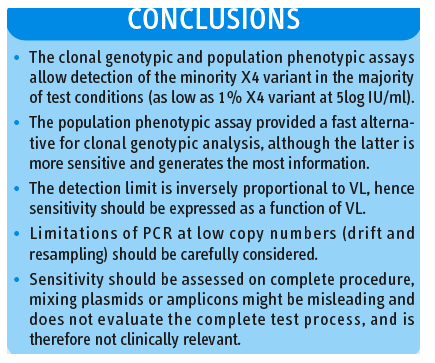
ABSTRACT
BACKGROUND:
Maraviroc is a CCR5 co-receptor antagonist showing promising results in recently presented clinical trials. Patients were screened for the presence of dual/mixed R5/X4 viruses prior to enrollment, and, if present, subsequently excluded from this treatment option. Clinical response was partially driven by absence of X4 viruses, however,
no clear cut-off values on presence/absence of such virus population have been established. The purpose of this study is to initiate the study of such cut-off values by determining the detection limit of X4 viruses in an abundant R5-tropic virus population.
METHODS:
Artificial mixtures of JRCSF and NL4.3 were prepared. The minority NL4.3 input comprised 2.5% a n d 1%, 20% a n d 8%, a n d 20% a t , respectively 5 , 4 , and 3 log IU/ml. RNA was extracted and the gp120 NH2-V4 region was amplified multiple times, pooled, and cloned into pCR4-TOPO. Recombinants were analyzed by AluI
restriction digestion. For phenotypic analysis, purified NH2-V4 amplicons were recombined with pHXB2D-∇NH2-V4-eGFP. Recombinant virus stocks were produced in 293Tcells, and used for infection of U87-CD4-CXCR4 and U87-CD4-CCR5 cells.
Infection was evaluated by microscopic and FACS analysis.
RESULTS:
Theoretical analysis illustrated that the ability to detect minority quasispecies depended on initial viral load (VL) and assay design. Experimentally, the lowest percentage at which the minority variant was detected was 1% at 5log IU/ml, but at 3log IU/ml, the 20% minority variant was detected in only three out of five experiments. For the phenotyping experiments at 5log IU/ml, a 1% X4-tropic minority species was detected both microscopically and by FACS analysis. If recNL4.3 could not be detected genotypically, there was also no X4-tropic virus phenotypically. FACS analysis was more sensitive in detecting minority fractions than microscopic fluorescence measurement.
CONCLUSIONS:
The detection of the minority X4 variant was possible in the majority of test conditions.
As theoretically anticipated, the success rate decreased with decreasing viral loads and minority template input. It might be unrealistic to expect detection of minority variants below 1% at 5log IU/ml, with decreasing chance of success at even lower viral load. Establishing cut-offs for X4 minority species will be multifactorial (input volumes, VL, detection limits, PCR drift, resampling issues).
INTRODUCTION
Several methods are available to analyze and characterize variable populations (Table 1).
Table 1. Overview of mutation detection technologies, including advantages and disadvantages.
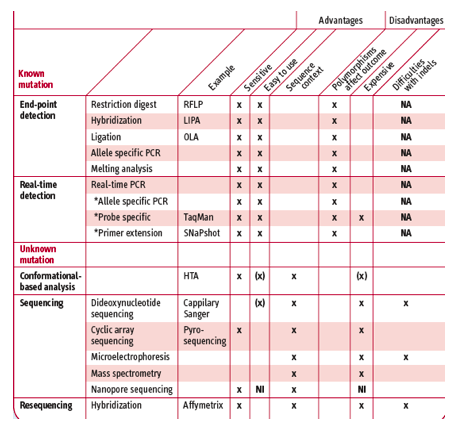
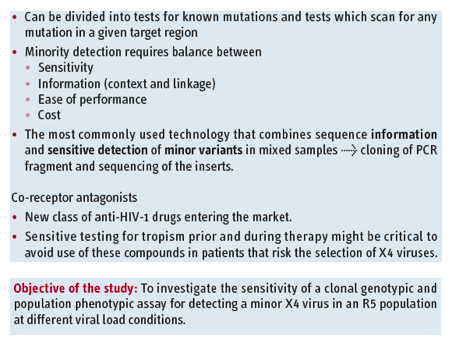
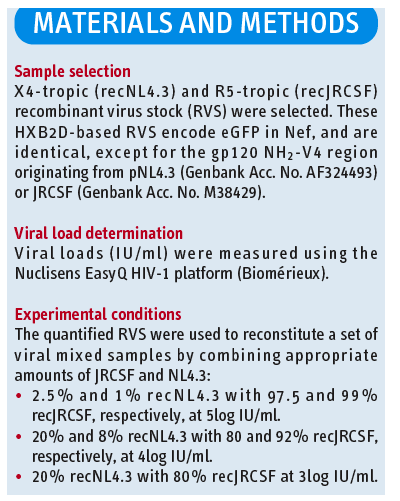
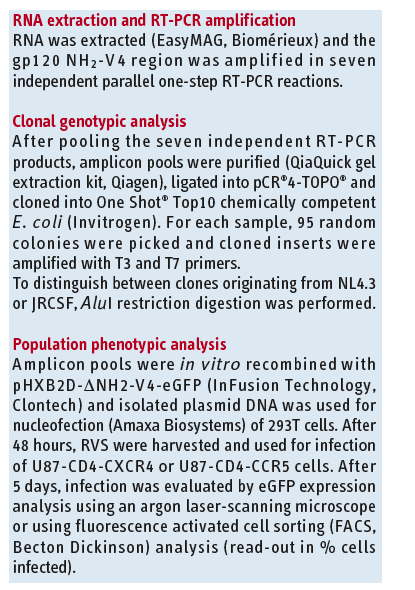

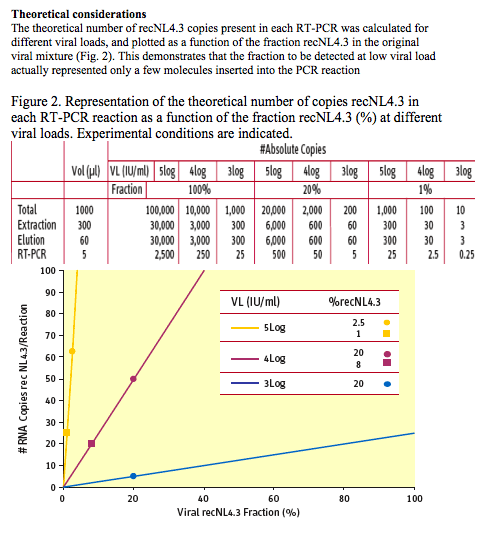
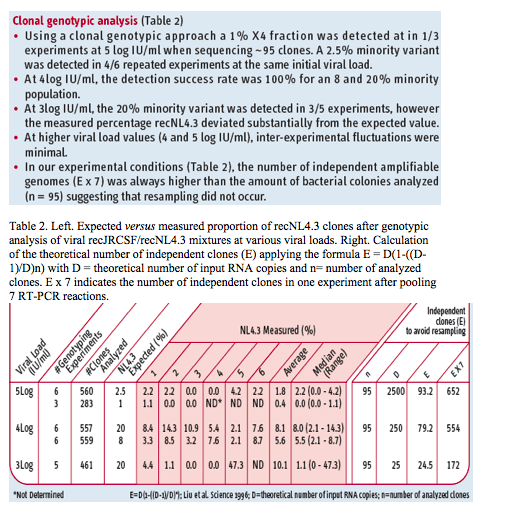

REFERENCES
1. Liu, S. L. et al. Science 273, 415-6 (1996).
2. Cai, F. et al. Nat Methods 4, 123-5 (2007).
3. Margulies, M. et al. Nature 437, 376-80 (2005).
4. Dressman, D., et al. Proc Natl Acad Sci U S A 100, 8817-22 (2003).
|
| |
|
 |
 |
|
|